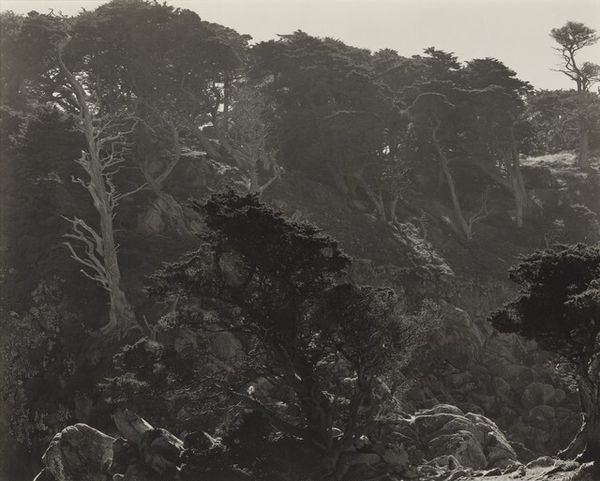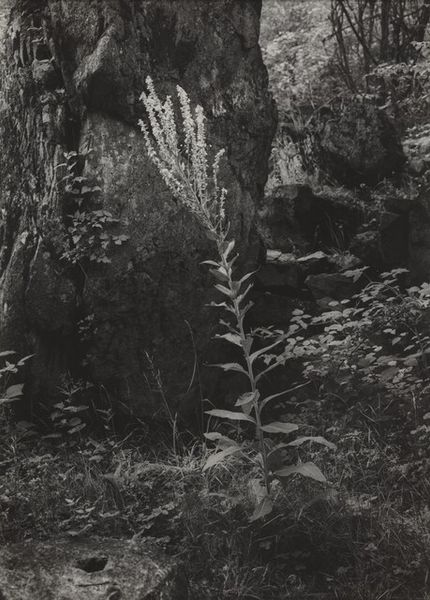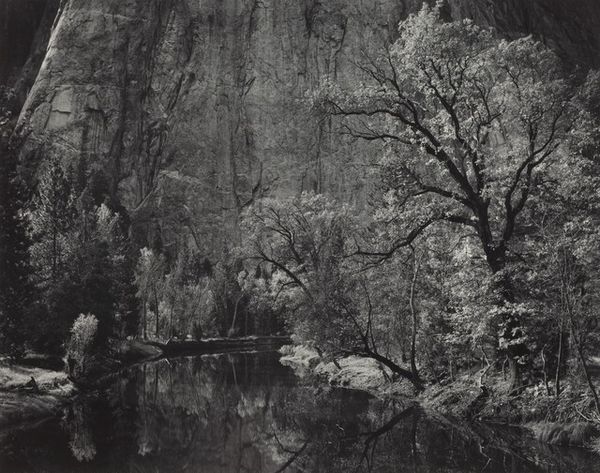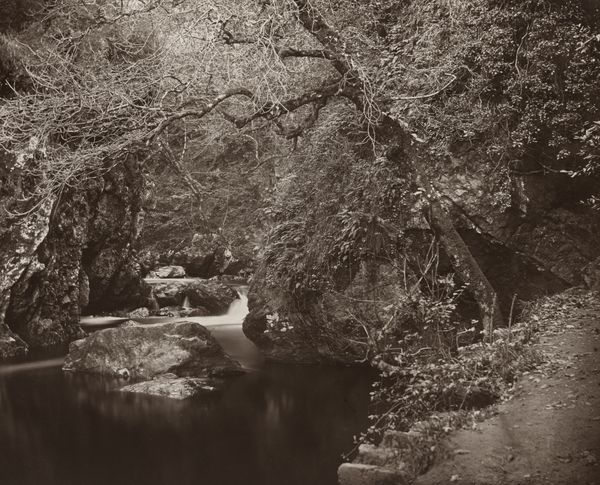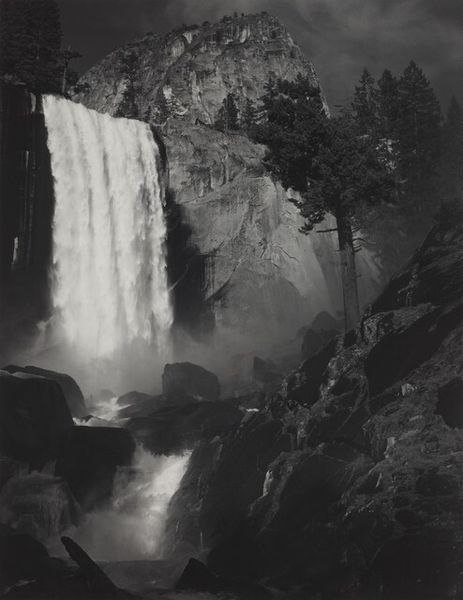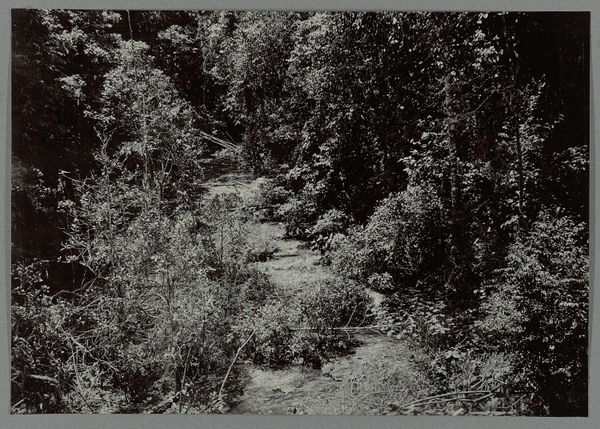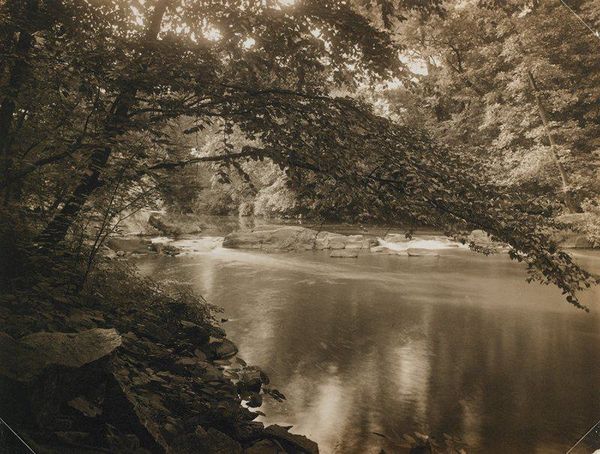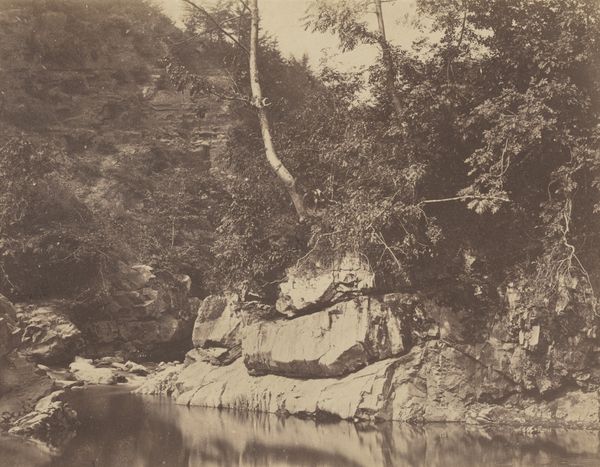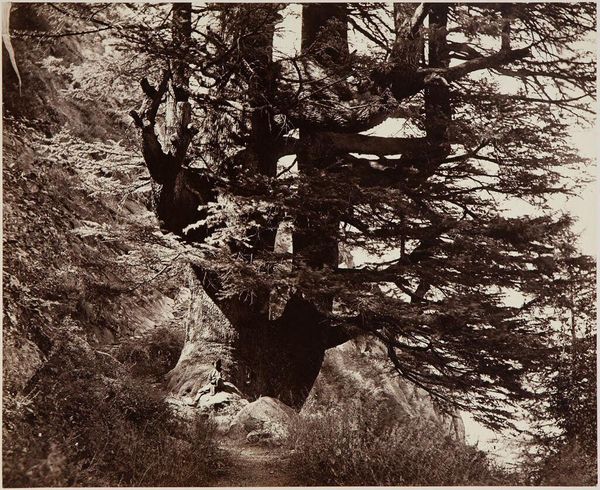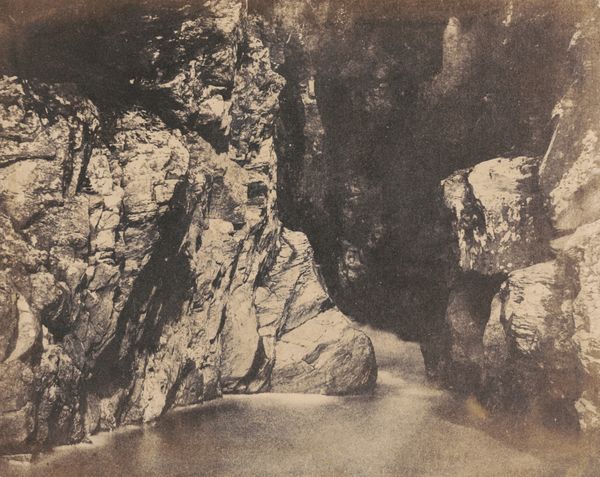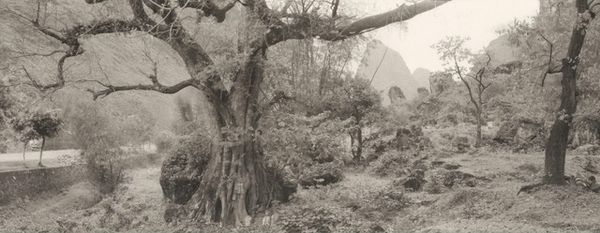
photography, site-specific, gelatin-silver-print
#
solitude
#
natural shape and form
#
organic
#
countryside
#
landscape
#
nature
#
rugged
#
photography
#
site-specific
#
gelatin-silver-print
#
gloomy
#
nature heavy
#
natural texture
#
organic texture
#
modernism
#
realism
#
shadow overcast
Dimensions: image: 19.37 × 24.13 cm (7 5/8 × 9 1/2 in.) mount: 35.56 × 39.37 cm (14 × 15 1/2 in.)
Copyright: National Gallery of Art: CC0 1.0
Curator: Immediately I feel this incredible sense of raw, untamed space—almost elemental, wouldn’t you say? It’s brooding, and yet somehow serene. Editor: What we’re looking at is Edward Weston’s "Point Lobos," taken in 1944. A gelatin silver print, its creation highlights both Weston's mastery of his craft and a specific historical context around photographic materials. Curator: Gelatin silver print, okay, technical, but the thing practically breathes! The way the light just clings to the stone—it's almost palpable, you know? Like you could reach out and feel the rough texture, the cool dampness of the shadows. Editor: Indeed. The photographic process itself – the developing, printing – became an important aspect of the art in the early to mid 20th century, elevating what had been purely documentation to a fine art practice with distinct technical and material considerations. This precise printing is also tied to commercial demand; how these became items of consumption impacts interpretation, too. Curator: Consumption… that’s a harsh way of putting it. More like a craving, an irresistible desire to own a fragment of that sublime desolation. And he was so clever about how he framed the photo. You almost feel lost in the details of it, trapped there on this hillside. Editor: The market demand certainly encouraged his explorations. Think also about how site-specificity becomes interesting when linked to photographs of "landscape." Is there an argument here, implicitly, about conservation, or control of the visual commons? The very act of creating multiples complicates a pure, romantic reading of nature as singular. Curator: That’s a fascinating idea – this dance between nature and mass production, the original and the copy. Maybe Weston was pointing out how fragile those "wild" places really are in our modern world. Beautiful, sad, perfect. Editor: Well, thank you for your, as always, thoughtful personal response. Hopefully our visitors will contemplate these issues and appreciate Weston's legacy with a new perspective on photographic materiality, and environmental advocacy.
Comments
No comments
Be the first to comment and join the conversation on the ultimate creative platform.

